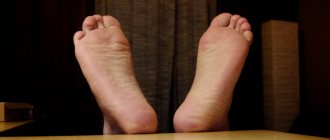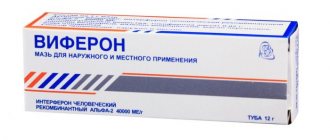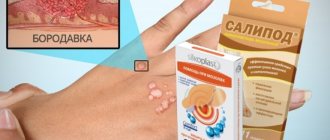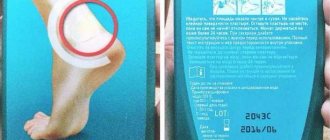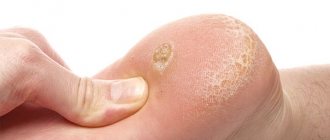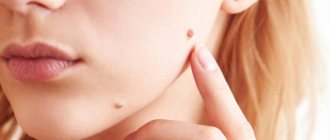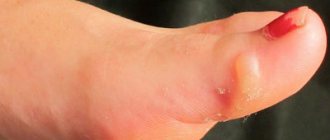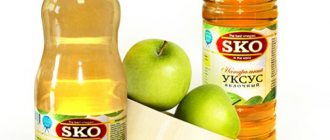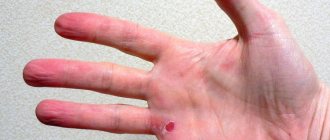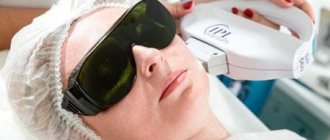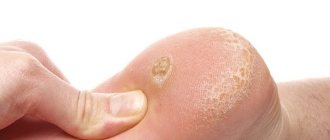The most common cause of the formation of corns and calluses is uncomfortable or ill-fitting shoes. Nowadays, this problem occurs to one degree or another in 9 out of 10 people. Formations that are harmless at first glance not only look aesthetically unattractive, but are also often accompanied by painful sensations, interfering with a person’s full life. Removing calluses and corns with a laser is the most effective and at the same time safe way to solve the problem.
Laser technology
When laser equipment is turned on, a reaction occurs that results in the release of photons. These particles move towards the atoms and provoke them to give up twice as much energy as was expended. A reaction starts when some atoms affect others. The consequence of the reaction is a ray flux. These rays are visible to the eye and are similar to ordinary light. The laser transmits a significant amount of energy to the tissues.
Once on the skin, the photons are converted into heat. Due to the thermal effect, water (intercellular and intracellular) is removed from tissues. The result of therapy is a dry crust at the site of the callus. Laser therapy can affect tissue with varying strengths, so the depth of penetration is controlled by a doctor.
The laser has an interesting feature: after hitting the tissue, the beam never dissipates, maintaining its diameter regardless of the depth of penetration. This property allows you to remove calluses with high accuracy, since the final result can be predicted in advance.
Laser radiation can be customized: the beams come in fractions (separate beams) or in one stream. In therapeutic practice, preference is given to fractional rays, since they not only destroy calluses, but also make it possible to activate tissue regeneration in nearby areas.
The regeneration mechanism is as follows:
- Some of the laser beams penetrate the pathological area of the skin and eliminate the tumor in it.
- As a result of exposure, individual cells responsible for the synthesis of fiber and intercellular skin substance are evaporated.
- Since some cells are destroyed, the body launches a protective response - activating new cells and skin structures.
- New skin replaces hyperkeratotic areas.
To remove core calluses, laser is the best treatment method. Therapy is carried out by fractional exposure. The density of the rays is controlled by a specialist. The edge of the callus is treated with thin beams, and the shaft with dense beams.
Reasons for appearance
The main cause of growths on the skin is a disturbance in the functioning of calcium metabolism. Another cause of calluses can be wearing uncomfortable shoes, profession (artist, worker, etc.), excessive sweating, heredity, heavy physical activity, obesity, lack of vitamins, flat feet, psoriasis and other types of diseases. It doesn’t matter what type or type of callus on the skin, but it must be treated. In case of injury to calluses, infection and microbes are introduced under the skin, which can lead to the formation of pus. Therefore, the problem of the occurrence of such growths on the skin cannot be left just like that.
Indications and contraindications
Laser removal is used both for the treatment of dry calluses and in the case of core tumors.
Indications for laser callus removal are the following conditions:
- diabetes;
- itchy sensations in the callus area;
- pain when walking;
- pronounced change in the color of the callus (blueness, redness);
- bleeding of the growth;
- callus cracking;
- increase in neoplasm due to thickening of the growth;
- pronounced swelling.
In some cases, laser therapy is unacceptable:
- immunodeficiency;
- decompensated diabetes mellitus;
- acute stage of herpes;
- any manifestations of skin diseases in the callus area;
- keloid scars;
- exacerbation of infectious diseases;
- epilepsy.
The above are absolute contraindications. There are relative restrictions, including pregnancy and childhood (less than 15 years).
Treatment methods
As already mentioned, removing calluses is a mandatory procedure. It all depends on the type of formation. If it is a young growth, then it can be cured at home using special baths and folk recipes. Some types of formations are removed in a pedicure salon using a bur. However, there are only five methods by which such formations are removed. The first method is folk remedies. This method can be dangerous in some cases, so be careful. The second method is a cast. An individual impression is made by a doctor and involves leg padding, which helps distribute the load on the legs evenly. The third method is surgery. This method is carried out only in serious cases and requires consultation with a doctor. The fourth method is liquid nitrogen. This removal involves applying nitrogen to the keratinized area of the skin in order to soften it. The fifth and most effective method is laser removal of skin growths. The method involves cauterizing the formation followed by evaporation of the liquid inside. The method removes not only the upper layers of the skin, but also the inner cells.
Advantages and disadvantages of the technique
Laser therapy for calluses has a number of important advantages:
- The procedure does not cause pain as it is performed under local anesthesia.
- No blood loss. Due to the high temperature effect, the small vessels that fed the neoplasm are sealed.
- There is no danger of infection getting into the wound. Before intervening in the body, the doctor treats the hands and the surgical field with disinfectants. However, there are also specific reasons not to worry about infection that are specific to laser therapy. Firstly, the laser beam destroys microbes in the area of direct impact and in nearby areas. Secondly, the procedure is carried out without contact with the patient’s body with hands or devices.
- Short recovery time after surgery. The wound heals quickly, becoming covered with a dry crust. Tissue regeneration occurs in approximately 2 weeks.
- There are no serious restrictions during the recovery period. You just need to follow a few simple recommendations, which will be discussed below.
- Callus removal occurs in one procedure, which lasts no more than 10 minutes.
- The laser does not leave scars due to the fact that the penetration of the rays is carried out to a strictly specified depth.
- There is no need for repeated visits to the doctor for dressings and suture removal.
- There are no recurrences of the appearance of callus.
The only drawback of the technique is its high cost: laser therapy is more expensive than other treatment methods.
Benefits of laser treatment
The laser callus removal method is so popular because it has attractive advantages over other types of skin growth removal:
- no rehabilitation period;
- the laser completely eliminates the source of the problem;
- high level of sterility;
- no scars or scars remain;
- painlessness;
- Callus removal lasts ten minutes;
- prevention of the appearance of new formations;
- there is no risk of infection;
- a precise laser that does not touch healthy areas of the skin.
The main thing is to see a doctor.
Description of the procedure
The session is carried out on an outpatient basis (in other words, there is no need to go to the inpatient department of the hospital).
Treatment is carried out in the following order:
- The doctor disinfects gloved hands and the surgical field.
- An anesthetic drug is injected into the callus area. For this, a syringe with a thin needle is used.
- When the area with the callus becomes numb, the doctor treats it with a laser beam.
- If a lot of tissue had to be removed (with extensive callus), the wound is treated with a solution and drainage is placed. The top of the operated area is covered with a sterile bandage.
How to recognize the symptoms of calluses?
The main sign of a callus is an unpleasant sensation in a local area of the skin. The affected area turns red and may swell, after which a white-yellow blister forms. Any contact with a callus ends in unpleasant sensations.
A characteristic symptom of dry callus is also a dull pain in the area of its formation when pressed. It happens that it hurts on its own.
Postoperative period
For 2–3 weeks, it is recommended to follow the following rules to avoid complications:
- Do not pick the scab off the wound.
- Do not wear shoes that do not fit properly or shoes made of synthetic materials. If the shoes have heels, then their height should not exceed 4 centimeters. You should not use shoes with completely flat soles during this period.
- Do not take heat or water procedures. During the recovery period, you need to avoid visiting the bathhouse, sauna, swimming pool, baths or showers. Hygienic procedures are carried out by targeted washing of the body. The most important thing during this period is not to wet the wound. Showering is only permissible if a special waterproof plaster is used.
- Use local antibacterial and healing drugs recommended by your doctor.
Sources of the problem
Treatment of calluses on the feet is carried out for various reasons. An examination is being carried out. It will identify the source and help you choose a removal method. Manifestations appear in a number of cases:
- Uncomfortable shoes. It puts pressure on the foot, leads to external manifestations, and cannot be eliminated with improvised means.
- Spinal injuries. A person leans more heavily on his leg, asymmetrical calluses appear on the foot.
- Viral infections. A dermatotropic virus spreads, penetrating into the deep layers of the skin. Round formations appear. They do not go away with cosmetic measures or improper treatment.
- Excess weight. Significant body weight negatively affects the body and leads to pressure on the foot. The only way out is to check the hormonal system, eat right, and increase physical activity.
Treatment and treatment of the wound after laser removal of a wart
After laser removal of a wart, the wound needs to be treated daily with antiseptics (iodine, potassium permanganate solution, Fukortsin), and then treated with ointments with a wound-healing effect (Kontraktubeks, Actovegin, Panthenol).
How to heal an open wound
In case of an open wound, it is necessary to use drying agents for treatment; to do this, lubricate the surface 2-3 times a day with one of the following preparations:
- iodine,
- brilliant green,
- strong solution of potassium permanganate,
- Fukortsin,
- Chlorhexidine,
- Miramistin.
Drying agents create crusts on the surface, under which new skin forms.
From the first days, it is recommended to take vitamin preparations and tinctures with an immunomodulatory effect (for example, lemongrass, echinacea). They are prescribed by a doctor in order to strengthen the immune system and speed up healing. They will also help avoid relapse of the disease. After the dense crusts fall off on their own, ointments and gels are applied to the wound, which have a restorative effect:
- Actovegin,
- Solcoseryl,
- Alantan,
- Panthenol,
- Vulnuzan,
- Bepanten,
- Methyluracil,
- Levomekol,
- Curiosin.
We recommend reading about the effective procedure for electrocoagulation of moles. You will learn about indications and contraindications for the procedure, methodology, rehabilitation period, subsequent skin care, as well as cost. And here is more information about removing a scar on the lip.
Foot treatment after surgery
To treat the foot after cauterization of the wart, antiseptic agents are used: use a sterile bandage or napkins, moisten them in a solution of Chlorhexidine or hydrogen peroxide and gently wipe the feet. Rubbing the wound should be avoided. Iodine or furatsilin solution, Fukortsin, is applied to its surface with a cotton swab. After this, be sure to wait until it dries completely.
If the patient is at home, then you should try to ensure free access of air to the coagulation site as often as possible, so healing will proceed faster. When you plan to go outside, a sterile napkin is applied to the wound and secured with an adhesive plaster. Then put on socks made from natural materials.
After the scab is rejected, the leg can be washed with warm water and baby soap. The wound is blotted with a napkin or cotton pad and a wound healing ointment with an antibacterial effect is applied:
- Levomekol,
- Argosulfan,
- Vulnuzan,
- Baneocin.
It is important that until complete healing there is no contact with potential sources of infection - the beach, swimming pool, gym, bathhouse. Shoes must be closed, but ventilated; in winter, it is imperative to use replacement shoes indoors.
How to treat shoes
After laser cauterization, it is recommended to treat shoes with antiseptics ; to do this, first wash them well and dry them with an electric dryer, then thoroughly wipe the inner surface with one of the solutions:
- Miramistin,
- Chlorhexidine,
- Hydrogen peroxide,
- Formidron.
Treating shoes with antiseptic
This is important because the virus that causes warts can survive well in the environment.
Wound care
Rehabilitation after a laser procedure is aimed at restoring the integrity of the skin. To do this you need:
- Protection from mechanical damage. This is especially important after removing a plantar wart with a laser; here the skin can be easily injured by tearing off the scab ahead of time. To prevent this from happening, you should wear comfortable shoes. It’s better to provide yourself with the opportunity to stay at home for 3-5 days and walk barefoot. Air baths promote healing.
- Water protection. The wound should not be wetted for at least 3 days. It’s better to avoid getting liquid on it until the crust falls off. You can wash in the shower with warm water, do not rub the area where the wart was with a washcloth.
- Use of external means. It is imperative to disinfect the wound with an antiseptic. This can be a 0.5% solution of chlorhexidine, potassium permanganate or calendula infusion. Anti-inflammatory creams and gels are also prescribed.
- When the crust falls off and a renewed area is revealed, it can be smeared with Contractubex to avoid the formation of a pronounced scar. After removing a wart with a laser, you should check with your doctor about what to treat the skin with.
- Protection from external influences. You cannot go to the sauna, take a hot bath, sunbathe, swim in a pool or open water for at least a month. All this is fraught with infection, the appearance of a hypertrophic or keloid scar, and impaired skin pigmentation. The use of decorative cosmetics is prohibited at least until the crust falls off.
- You cannot use aggressive care products on the area of the healed wound for another month.
In what cases should calluses be removed?
The first callus that forms does not need to be removed. Maintaining hygiene and avoiding skin contact with the object that caused the callus will be enough to avoid the accumulation of the stratum corneum. Otherwise, the keratinized epithelium will increase, which can lead not only to aesthetic, but also physical discomfort.
It is recommended to remove calluses if there are the following indications:
- pain on palpation or while walking;
- proliferation of rough skin;
- the appearance of bloody or bloody discharge from the callus;
- presence of cracks;
- infection, suppuration of callus.
Calluses must also be removed. These are neoplasms that go deep into the skin.
